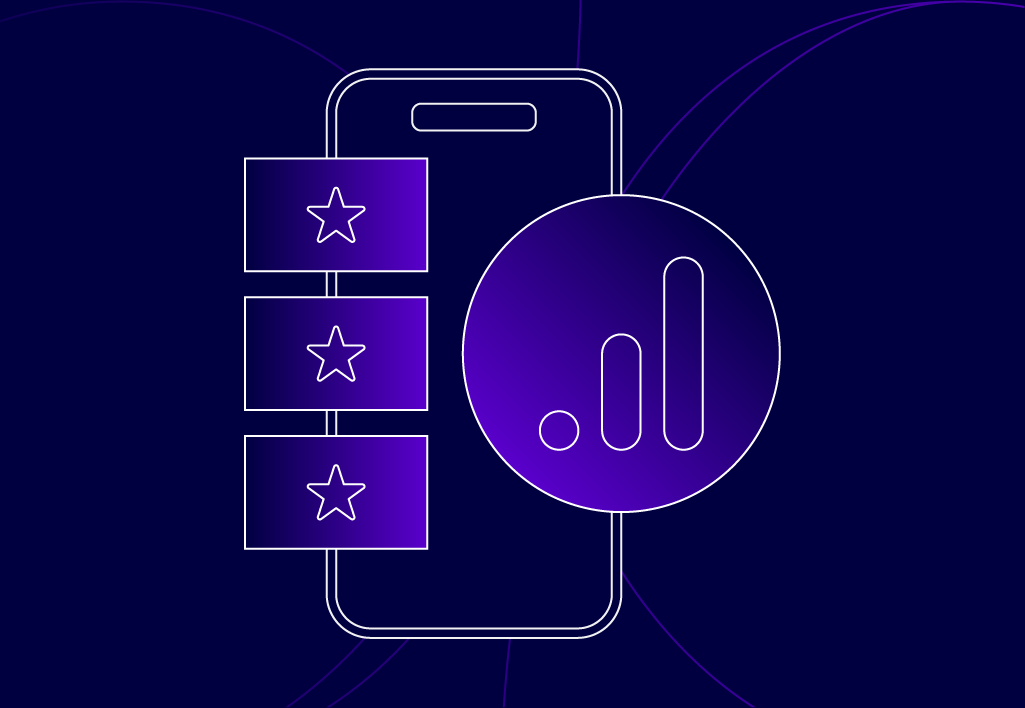
Behavioural science: A brief summary, and a glossary of terms worth knowing

Research into behavioural science has exploded in recent years. Described as a breakthrough science – for marketers, in particular – this area of research has enabled those in the business of influencing to better predict consumer behaviour. With a better idea of how your target audience may or may not respond to certain nudges, you can more purposefully decide which areas of marketing to invest in – PPC, Content Marketing, Paid Social, to name a few – and what type of branding and messaging will speak to them best (hence, scoring better conversions).
Behavioural science is a key consideration when formulating any marketing strategy, be it on your own or by working with a creative agency with behavioural insight software at their disposal. As such, we thought we’d put together a quick glossary of terms that may help you better navigate the complex territory of buying habits and human behaviour. But, before we get going, let’s first quickly make sure we’re same-paging it as regards what the term means. So…
What is behavioural science?
Behavioural science is an umbrella term that feasts on the research of disciplines such as psychology (the big one), sociology and behavioural economics. It is the science that tracks and maps human behaviour in an attempt to understand the effect of an individual’s psychology – including emotions, social norms and habits – on decision-making.
How can behavioural science be used in digital marketing?
Behavioural science is key to any budding marketer. Traditionally, the tactics employed heavily by the marketing industry have been viewed as somewhat aggressive – think clickbait headlines, in-your-face pop-up ads, and unskippable commercials, all of which give the impression of attempting to strong-arm a sale. However, as is unsurprising, these tactics aren’t always as persuasive as the budgets spilt into them may hope for. This is because people, as a rule, rarely enjoy being marketed to, which is where behavioural science comes in.
Behavioural science shows us that humans are ruled by forces beyond even each individual’s own awareness. This field of science, which was notably popularised by pioneering psychologist John B. Watson in the 1930s, takes a deep dive into what makes consumers tick and, precisely because of this, is still crucial to marketers all these years later.
In the decades that have followed its origins, the science has evolved tremendously to match the evolution of modern society. Today, behavioural science helps marketers to strategise how best to target campaigns and personalise ads in a way that will influence consumers to purchase one product or service over another.
Behavioural science: A jargon-free glossary

Action bias: Humans have a tendency to favour action over inaction. This is the case even in scenarios where we feel compelled to act without concrete evidence that our actions will lead to a better outcome than doing nothing would. This tendency to respond with action as a default, even without solid rationale, is action bias at play.
Affect heuristic: This term describes how humans can have a tendency to prioritise emotions, rather than concrete information when making decisions for themselves or others. Though this subjectivity can result in us reaching conclusions more quickly, it can also distort our thinking and lead us to land on suboptimal choices.
Authority bias: This bias is a form of irrational trust in relation to the judgement of experts. This term was popularised by American psychologist Stanley Milgram and was famously exhibited during the summer of 1961 in his controversial study into human obedience.
Availability heuristic: This is the mental shortcut in which we typically make decisions on information that is more readily available. Information that is quicker to access and that springs to mind sooner is given greater weight, even if it may not have come from the most accurate source or if it does not fully represent the bigger picture.
Behavioural economics: This is the study of psychology as it relates to the economic decision-making processes of individuals and institutions. It is also referred to as normative economics. Behavioural economics has identified a range of biases that result from the way people think and feel.
Choice overload: Too much choice is overwhelming, often leading to periods of inflated deliberation and procrastination. Behavioural scientists describe this choice overload as contributing to consumers feeling conflicted or apathetic, due to decision fatigue, which inevitably results in opting for the default option or, just as common, deferring having to make a choice at all – meaning not buying anything.
Cognitive bias: This is a common limitation in objective thinking that is caused by the tendency for the human brain to perceive information through a filter of personal experience and preferences.
Cognitive dissonance: This term is used to describe the mental discomfort that comes from ambivalence. As such, cognitive dissonance results from holding two conflicting views or from engaging in an activity that opposes one’s beliefs.
Decision fatigue: Similar to choice overload, decision fatigue refers to that weary feeling you get after being overwhelmed by the number of decisions needing to be made. It is the idea that, after making many decisions, a deteriorating effect occurs in which a person’s ability to make additional choices worsens.
Decor effects: This is the existence of an inferior option being intentionally introduced to the mix of things to choose from. The presence of this less desirable option can lead to the intended brand/product being more likely to be chosen due to the immediate comparison and clear winner.
Diversification bias: This term describes the tendency to choose more variety – essentially, to diversify – when making a combined purchase for your future self. For example, at the supermarket, you might overbuy so that your future self has a variety to choose from.
Endowment effect: This occurs when we overvalue something that we own, regardless of its objective market value. This type of bias is evident when people are reluctant to part with one of their possessions for its cash equivalent, or if the amount that that same person would pay for that good is lower than what they would willingly accept if they were to sell it.
Herd behaviour: This is the social phenomenon in which humans act collectively as part of a group in ways that they may not if having to make a call on the same situation as an individual. The influence of the group is sizeable for two core reasons: social pressure and the belief that the majority is more likely to be correct (over the minority).
Hindsight bias: This psychological phenomenon is when people, after an event occurs, convince themselves that they actually predicted it before it happened. This can result in the same people concluding, at a future point, that they can accurately predict other events as they were ‘successful’ before. This bias has been the subject of behavioural economics research as it is a common failing of individual investors.
Identity economics: This term suggests that we make economic decisions based on monetary incentives and our identity. Outlined in Akerlof and Kranton’s (2000) paper, identity economics states that a person’s sense of self or identity affects the choices they make.
IKEA effect: This is a cognitive bias in which people place a higher value on things they helped to build or create. Their role in the construction or design of the product makes them regard it more highly.
Information avoidance: This term refers to situations in which people choose not to obtain knowledge, even if it is freely and easily available. Their choice to actively avoid this information stems from them wishing not to alter or complicate the opinions they have already formed.
Loss aversion: This natural cognitive bias is where a real or potential loss is perceived by individuals to be more severe than an equivalent gain. For instance, the pain of losing £100 feels far greater than the pleasure of finding the same amount. This phenomenon was first identified by trailblazing psychologists Amos Tversky and Daniel Kahneman.
Pain of paying: Simply what it says on the tin – this term refers to the negative emotions of loss we feel when making a purchase. This is due to loss aversion: the human tendency to minimise losses wherever possible.
Power of free: People tend to value free products more than they would otherwise. For example, a free phone case bundled into your purchase of a mobile phone may feel more valuable to you than if you’d had to buy the phone case outright. This is also sometimes referred to as the Zero Price Effect.
Power of now: This is the irrational emphasis humans place on what matters today. It is the preference for immediate payoffs rather than long-term wins.
Priming: In a psychological sense, priming is behaviour that is influenced by cues that work subconsciously – for example, music influencing your choice of where to go out for dinner.
Projection bias: This phenomenon occurs in instances where one person thinks that others will have the same opinion or attitude as they do, even if this is unlikely to be the case. Simply put, it is projecting your experience onto another’s and assuming both will be compatible.
Regret aversion: This occurs when people fear that a choice they have made will later turn out to be incorrect. This anxiety can stem from both action (e.g. buying the wrong stock) and inaction (e.g. not buying the right stock). Regret can be a powerless and uncomfortable state to sit in. As such, people will commonly go out of their way to avoid it occurring.
Scarcity bias: This is the bias in which scarcity breeds demand and inflates the price. This is because an item that has limited supply is deemed to be of greater value.
Social proof: This phenomenon is the idea that people copy the actions of others in an attempt to emulate behaviours in certain situations. This can be seen in marketing when people shop, for example. During the shopping experience, people will seek out reviews or recommendations from others first before making their decision. The term ‘social proof’ was coined in 1984 by author Robert Cialdini.
Status quo bias: People are very committed to keeping things the way they are. The status quo bias might lead you to stay with your current provider in order to keep things the same rather than to take a risk on an unfamiliar but potentially better, service option.
Get in touch with Embryo for digital marketing expertise
Looking to learn more about how behavioural science can impact your business’s marketing? Check out some of our latest blogs here or get in touch with the team where we’ll be happy to discuss all things digital marketing.



